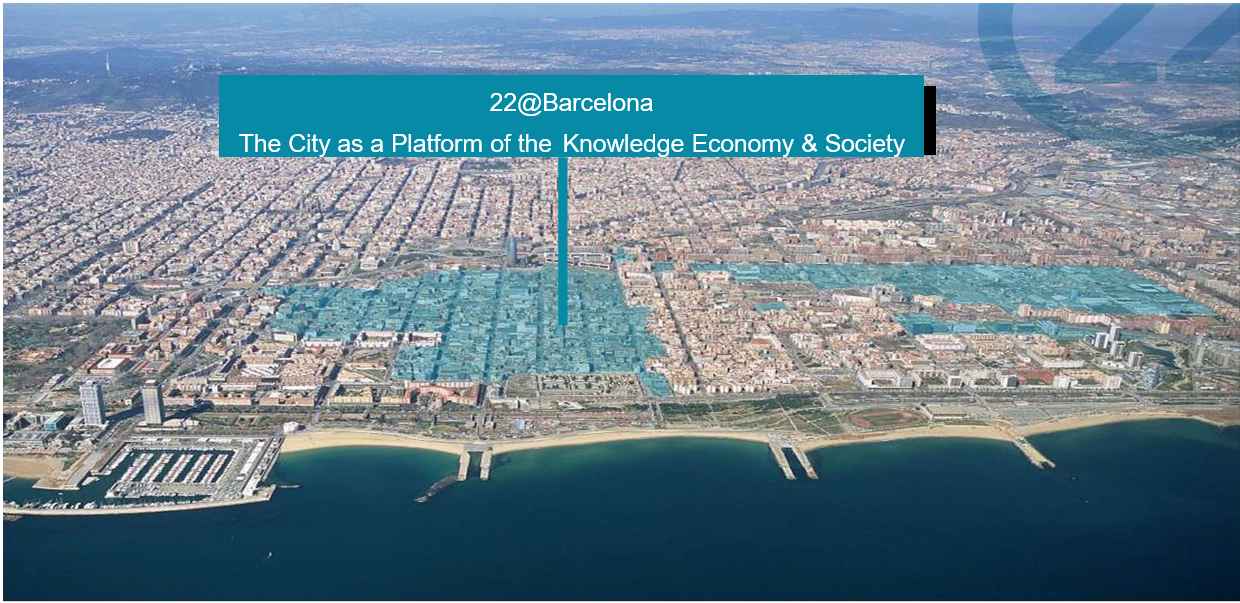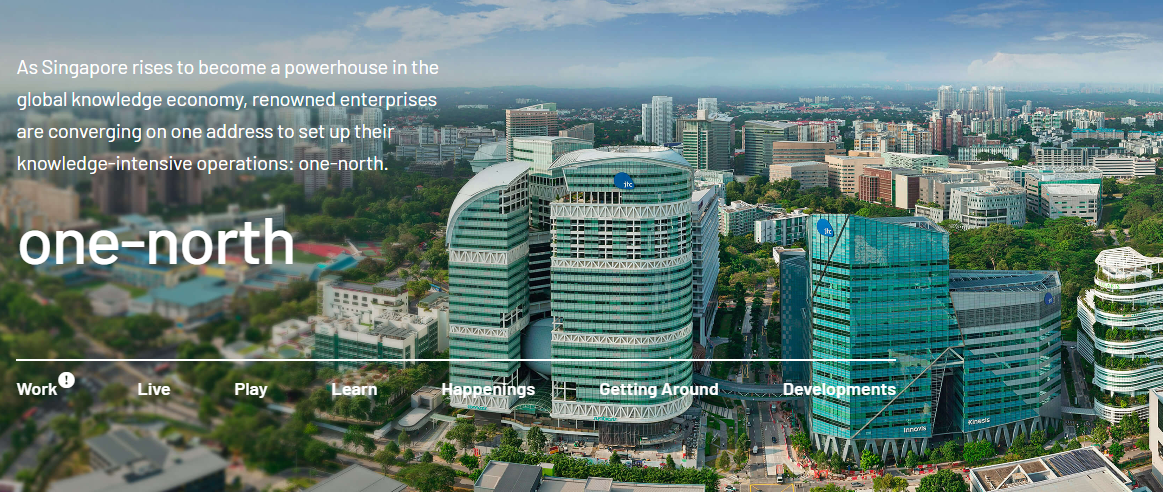Global experience in building innovation districts and centers, together with spurring innovation in modern higher education institutions
22@Barcelona – Khu đô thị sáng tạo đầu tiên của thành phố Barcelona (Tây Ban Nha)
The decision to establish 22@Barcelona in 2000 served as the answer to Barcelona City Council’s question regarding what needs to be done to improve and increase interaction between Barcelona’s businesses and organizations and the world. The project aims to transform Barcelona’s industrial center in the Poblenou area into the city’s knowledge and innovation hub.
22@Barcelona has a total area of 198.26 hectares that can expand up to 400 hectares, of which 320 hectares are reserved for innovative production activities and 80 hectares for residential and public offices.

22@Barcelona is an innovation ecosystem, developed based on a combination of many innovation theories and models, with its main purpose to promote technological development and innovation. The framework for 22@Barcelona consists of four innovation layers, including urban planning, building innovation centers, creating a collaborative environment, and attracting creative human resources. These layers are closely related to each other and are managed by municipal leadership.
One-north Singapore – ASEAN's first innovation district
The One-north project of Singapore was implemented in 2001 on an area of 182 hectares with an investment budget of 8.6 billion USD. This strategic project was formed after Singapore was severely affected by the 1997 Asian financial crisis when Singapore decided to become a knowledge center to be able to withstand future economic crises. One-north has the characteristics of an innovation district as it combines multiple innovation layers according to the framework of an innovation district.

What can be learned about building innovation districts and centers
The case studies of 22@Barcelona in Spain and One-north in Singapore demonstrate some of the following key points:
Regarding the development of innovation districts, the role of urban authorities which consists of 4 innovation layers, including urban planning, developing innovation centers as well as collaborative environments, and attracting creative human resources is regarded as the most crucial and decisive factor. In addition, the key aspects leading to the potential of these innovation projects which relate to the number of residents and the Gross Local Product index for innovation districts also need to be considered appropriately.
Regarding the development of innovation centers (located within innovation districts), the focal aspect includes the following:
Form and develop innovation center clusters in key science and technology fields
Form and develop innovative startup ecosystems associated with corporations, businesses, and public and private organizations to create favorable conditions for network interaction, intellectual synergy, and community interaction, the dissemination of knowledge
Develop innovative start-up activities including establishing spin-offs and other types of businesses with the potential to grow rapidly
Build infrastructure under the criteria of an innovation district in terms of urban planning and creating a collaborative environment
International experience in innovation development in modern higher education institutions
Faced with the challenges posed by the development trend of the 4th industrial revolution, as well as the impact of the knowledge economy and emerging contemporary social problems that need to be solved such as epidemics, environment, climate change, etc., higher education institutions have actively studied and put forward proposals to boost innovation. The following key points are summarized through the 2019 research report by the Norwegian University of Science and Technology (NTNU) on the contribution of modern higher education institutions to the development of innovation.
Policies based on development trends and internationalization
Regarding development trends, science and technology (S&T) and innovation practices nowadays are increasingly dependent on networks, clusters, innovation ecosystems, entrepreneurship, and interdisciplinary, inter-organizational, and multicultural connections. This means that the nature of modern S&T and innovation research processes in higher education institutions is becoming increasingly complex and placing more stringent demands on research groups than before. Therefore, higher education institutions need to have policies in place to support research groups in their understanding and orientation of their S&T and innovation activities.
University-industry collaboration policy
According to a 2019 report on the status quo and related policies of the Organization for Economic Cooperation and Development (OECD), there are 10 channels of cooperation between universities and businesses, including 5 formal channels: collaborative research, intellectual property (IP) transactions, research mobility, academic spin-offs, and labor mobility for businesses. There are also 5 informal channels: research publications, conferences and networking, geographic proximity collaboration, facility sharing, and training. Each channel is of great importance for different S&T or industrial fields. Therefore, the policies for each channel need to be carefully designed according to the needs of both parties. Among these channels, geographic proximity collaboration, which means collaboration between universities and businesses closely located to each other, plays a very important role. For instance, according to statistics from the patent registration database in 35 OECD member countries and China from 1992 to 2014, 50% of industrial invention practices took place within a radius of 30 km around a higher education institution.
Academic entrepreneurship development policy
Academic entrepreneurship can be broadly interpreted as entrepreneurial activities such as patent registration, technology transfer, and the creation of spin-offs, all of which are aimed at commercializing the output of researchers. In Norway, the majority of spin-offs come from renowned universities and research institutes with S&T capabilities, focusing on the key technology areas of biomedical and software with 3 divisions: life sciences, information and communication technology (ICT), and electronics, and physical products.
Entrepreneurship education development policy
The ultimate goal of entrepreneurship education is to contribute to economic growth and local development, as students will possess the right mindset, attitude, and skills to carry out innovation and creativity. Here is the current status and recommendations for policies related to the development of entrepreneurship education:
Modern entrepreneurship education focuses on the individual (student) and the development of an entrepreneurial mindset, rather than focusing on the entrepreneurial process as it did in the past. Students can apply this kind of mindset, along with freedom, autonomy, and self-responsibility, for a wide range of purposes, especially in their studies.
The role of students in entrepreneurial practices in higher education institutions is becoming increasingly important. Therefore, it is necessary to develop a systematic program and activities for students.
In modern entrepreneurship education, S&T disciplines have to incorporate entrepreneurship into the curriculum. This will contribute to the diversity in the design of new S&T products.
References
Economic zones in the ASEAN (2015), United Nations’ Industrial development organization
22@Barcelona: From industrial economy to knowledge based economy, J. M. Piqué
https://www.jtc.gov.sg/
Report “How Universities contribute to Innovation: a literature review-based analysis” (2019). NTNU.
University-Industry collaboration: new evidence and policy options, OECD, 2019.
Grimaldi et al., 30 years after Bayh-Dole: Reassessing academic entrepreneurship, Research Policy, 2011.
O’Conor, A conceptual framework for entrepreneurship education policy: Meeting government and economic purposes, Journal of business venturing, 2013.
Associate Professor, Ph.D. Pham Dinh Anh Khoi
University of Technology, VNUHCM
